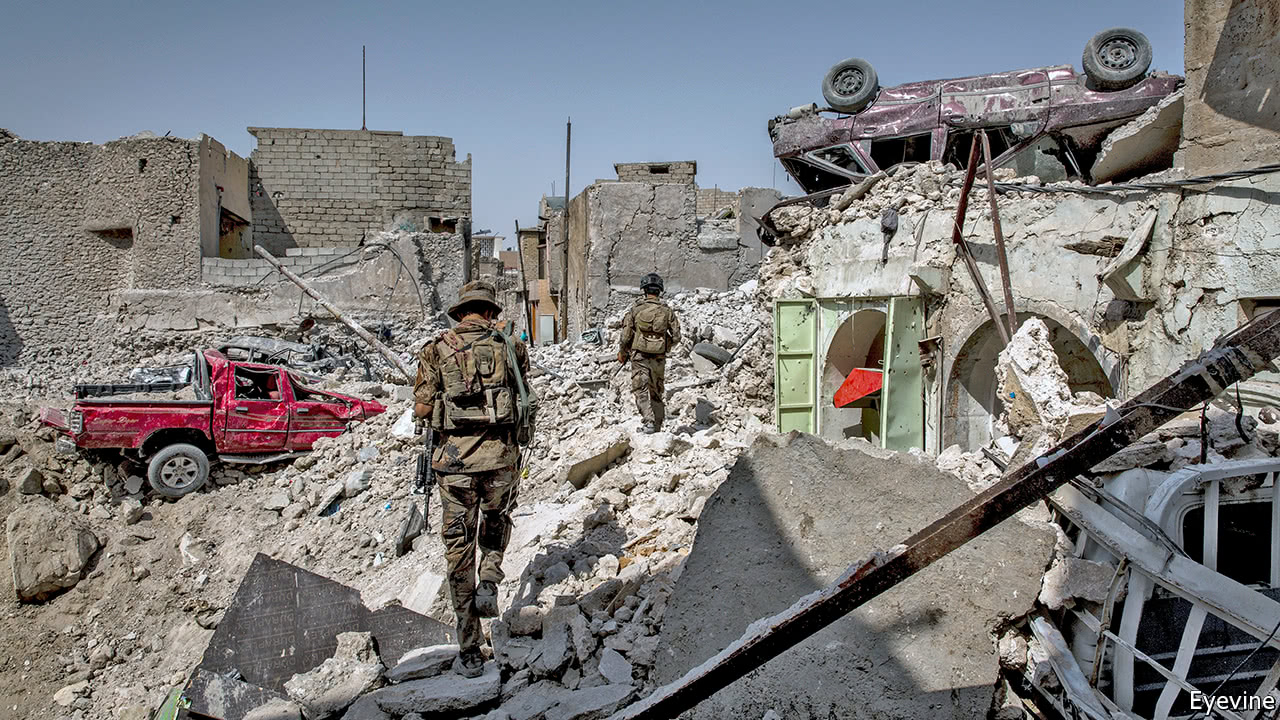The jihadists are not the only ones to blame
Date: Thursday, 24 August 2017
The jihadists are not the only ones to blame

THE Middle East is used to ruins. A millennium ago the “mad caliph” of Cairo, Hakim, ordered the levelling of all churches, including the Holy Sepulchre in Jerusalem, Jesus’s burial site. The Mongols sacked Baghdad in 1258, causing the Tigris to flow black from the ink of discarded books. Tamerlane spared nothing but hospitals and mosques as he went on what a contemporary chronicler called a “pilgrimage of destruction” across the region’s great cities. “She is empty, and void, and waste,” wailed Nahum, the biblical prophet, foreseeing the ruin of Nineveh at the hands of the Babylonians.
Still, the desolation of the past three years is probably the worst on record. According to the UN, half of the old city of Mosul, in Iraq, and a third of the old city of Aleppo, in Syria, are rubble. Hundreds of minarets, monasteries and monuments have been toppled. Of the world’s 38 endangered cultural-heritage sites, 22 are in the Middle East, says UNESCO, the UN’s cultural arm. “It’s Europe after the second world war,” says Michael Danti of the American Schools of Oriental Research (ASOR), which tracks the destruction.
The jihadists of Islamic State (IS) like to boast of their role in the wreckage. They have filmed themselves razing ancient temples, churches and mosques. So they do not quibble when their adversaries heap most of the blame on them for destroying the region’s heritage. “Responsibility of this devastation is laid firmly at the doorstep of ISIS,” said Major-General Joseph Martin, the commander of coalition forces in Mosul, after the jihadists blew up a medieval minaret in the city.
But the American and Russian armies, along with their local allies, have inflicted at least as much damage in their war on the jihadists. Data compiled by ASOR shows that IS damaged 15 religious sites in Mosul. The American-led coalition’s operation to recapture the city damaged 47, of which 38 were largely destroyed. Russian air strikes in support of Bashar al-Assad, Syria’s dictator, have damaged such treasures as the pillars where Saint Simeon the Hermit is said to have perched for 40 years. Mr Assad’s barrel-bombs have destroyed ancient buildings across Syria; so have the explosives of Western-backed rebels.
Ready, fire, aim
In 2011 the International Council of Museums (ICOM) supplied NATO with a list of heritage sites, and their co-ordinates, in Libya, which the alliance avoided in its bombing campaign. But the Saudi-led coalition in Yemen has been less scrupulous with the list that it received. Air strikes have hit the national museum in Dhamar, with its 12,500 artefacts; the Great Dam of Marib, an ancient engineering wonder; and the al-Qasimi complex of mud-brick towers in the old city of Sana’a. The best protection for the artefacts is often to leave them underground, says Hanna Pennock, a former director of ICOM.
Pressure for international action is rising. In March the UN security council reaffirmed that attacks on cultural sites are a war crime. Last September Ahmad al-Faqi al-Mahdi pleaded guilty in the International Criminal Court (ICC) to crimes of cultural destruction in Mali. The jihadist leader admitted to ordering attacks on Muslim shrines in Timbuktu. As The Economist went to press, judges from the ICC were expected to award reparations (who would pay them is unclear), setting a precedent for similar claims at other heritage sites.
The damage continues long after the shooting stops. Poverty, despair and a collapse of civic pride hasten the vandalism. Scavengers paw through the wreckage. The rock supposedly bearing the imprint of the Prophet Muhammad’s hand disappeared from a mosque in Aleppo last year. Egypt’s 72 archaeological warehouses, with thousands of uncatalogued artefacts, are manned by unarmed police and double as treasure troves for booty-hunters. International demand encourages the looting. In July Hobby Lobby, an American crafts chain, was fined $3m for importing thousands of ancient cuneiform tablets and cylinder seals from Iraq. Indirectly, at least, the trade has helped to finance IS.
Most of the smugglers get away. The Metropolitan Police in London, home to one of the world’s busiest antiquities markets, suspended its art and antiques unit in June. The authorities in the Arab world have more immediate priorities—or do not exist. Local truces have calmed much of Libya, but the country no longer has an effective department of antiquities to safeguard the country’s treasures. It has fallen to a ragtag band of fighters to protect Leptis Magna, the home town of Septimius Severus, a second-century Roman emperor, from less historically minded militants.
Reconstruction is often a euphemism for the final act of destruction. Antiquities experts mourn the treasures buried beneath the areas of Beirut that were redeveloped after its civil war. Land prospecting in Aleppo, often by cronies of Mr Assad, has already begun. Some treasures might survive. The floodlights are back on at the city’s majestic 12th-century citadel. The old city’s clock tower should soon peal for the first time in six years. Some facades, too, might get a facelift. But the foundations for tower-blocks that might soon soar over the city would tear through layers of an 8,000-year-old archaeological site. “Bulldozers,” bemoans an archaeologist, “can be even more damaging than tanks.”
Correction (August 18th, 2017): A previous version of this piece linked the American Schools of Oriental Research to the University of Pennsylvania. The two are no longer affiliated. This has been changed.